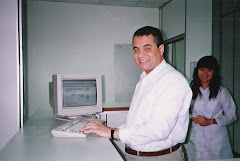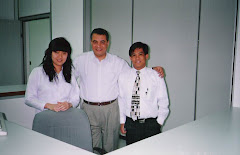TENIANIL Tincture ® for Athlete's foot


Athlete's foot is a very common skin infection of the foot caused by fungus. The fungus that commonly causes athlete's foot is called Trichophyton. When the feet or other areas of the body stay moist, warm, and irritated, this fungus can thrive and infect the upper layer of the skin. Fungal infections can occur anywhere on the body, including the scalp, trunk, extremities (arms and legs), hands, feet, nails, groin, and other areas.
Athlete's foot is caused by the ringworm fungus ("tinea" in medical jargon). Athlete's foot is also called tinea pedis. The fungus that causes athlete's foot can be found on many locations, including floors in gyms, locker rooms, swimming pools, nail salons, and in socks and clothing. The fungus can also be spread directly from person to person or by contact with these objects.
However, without proper growing conditions (a warm, moist environment), the fungus may not easily infect the skin. Up to 70% of the population may have athlete's foot at some time during their lives.
What are the symptoms of athlete's foot?
The symptoms of athlete's foot typically include various degrees of itching and burning. The skin may frequently peel, and in particularly severe cases, there may be some cracking, pain, and bleeding as well. Some people have no symptoms at all and do not know they have an infection.
What does athlete's foot look like?
Athlete's foot may look like red, peeling, dry skin areas on one or both soles of the feet. Sometimes the dry flakes may spread onto the sides and tops of the feet. Most commonly the rash is localized to just the soles of the feet. The space between the fourth and fifth toes also may have some moisture, peeling, and dry flakes.
There are three common types of athlete's foot.
1. soles of the feet, also called "moccasin"
type2. between the toes, also called "interdigital"
type3. inflammatory type or blistering
Unusual cases may look like small or large blisters of the feet (called bullous tinea pedis), thick patches of dry, red skin, or calluses with redness. Sometimes, it may look like just mild dry skin without any redness or inflammation.
Athlete's foot may present as a rash on one or both feet and even involve the hand. This is a very common presentation of athlete's foot. Hand fungal infections are called tinea manuum. The exact cause of why the infection commonly only affects one hand is not known.
Athlete's foot may also be seen along with ringworm of the groin (especially in men) or hand(s). It is helpful to examine the feet whenever there is a fungal groin rash called tinea cruris. It is important to treat all areas of fungal infection at one time to avoid re-infection.
Is athlete's foot contagious?
Athlete's foot may be contagious from person to person, but it is not always contagious. Some people may be more susceptible to the fungus that causes athlete's foot while others are more resistant. There are many households where two people (often husband and wife or siblings) using the same showers and bathroom for years have not transmitted the fungus between them. The exact cause of this predisposition or susceptibility to fungal infections is unknown. Some people just seem more prone to fungal skin infections than others.
What else causes foot rashes?
There are many possible causes of foot rashes. Athlete's foot is one of the more common causes. Additional causes include irritant or contact dermatitis, allergic rashes from shoes or other creams, dyshidrotic eczema (skin allergy rash), psoriasis, keratodermia blenorrhagicum, yeast infections, and bacterial infections.
Your physician can perform a simple test called a KOH, or potassium hydroxide for microscopic fungal examination, in the office or laboratory to confirm the presence of a fungal infection. This test is performed using small flakes of skin that are examined under the microscope. Many dermatologists perform this test in their office with results available within minutes. Rarely, a small piece of skin may be removed and sent for biopsy to help confirm the diagnosis.
What is the treatment for athlete's foot?
The treatment of athlete's foot can be divided into two parts. The first, and most important part, is to make the infected area less suitable for the athlete's foot fungus to grow. This means keeping the area clean and dry.
Buy shoes that are leather or other breathable material. Shoe materials, such as vinyl, that don't breathe cause your feet to remain moist, providing an excellent area for the fungus to breed. Likewise, absorbent socks like cotton that wick water away from your feet may help.
Our medication TENIANIL Tincture ® is 100 % effective to eradicate fungus infection and clear all symptoms of Athletic foot in short period of time.
TENIANIL Tincture ® is 10 % tincture made from the best herbs will known to be Antifungal antiallergic, able to eradicate any yeast infections in the site.
Package: 70 ml bottles with Sprayer.
Apply on the affected area 2 times daily until you get good result and satisfaction
Price only 10 USA dollars + Shipping
Inside Malaysia is 30 MR + Shipping



























